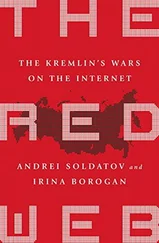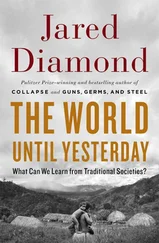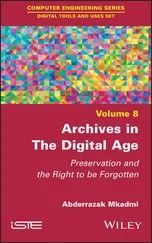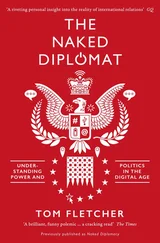Jared Cohen - The New Digital Age
Здесь есть возможность читать онлайн «Jared Cohen - The New Digital Age» весь текст электронной книги совершенно бесплатно (целиком полную версию без сокращений). В некоторых случаях можно слушать аудио, скачать через торрент в формате fb2 и присутствует краткое содержание. Жанр: Старинная литература, на английском языке. Описание произведения, (предисловие) а так же отзывы посетителей доступны на портале библиотеки ЛибКат.
- Название:The New Digital Age
- Автор:
- Жанр:
- Год:неизвестен
- ISBN:нет данных
- Рейтинг книги:5 / 5. Голосов: 1
-
Избранное:Добавить в избранное
- Отзывы:
-
Ваша оценка:
- 100
- 1
- 2
- 3
- 4
- 5
The New Digital Age: краткое содержание, описание и аннотация
Предлагаем к чтению аннотацию, описание, краткое содержание или предисловие (зависит от того, что написал сам автор книги «The New Digital Age»). Если вы не нашли необходимую информацию о книге — напишите в комментариях, мы постараемся отыскать её.
The New Digital Age — читать онлайн бесплатно полную книгу (весь текст) целиком
Ниже представлен текст книги, разбитый по страницам. Система сохранения места последней прочитанной страницы, позволяет с удобством читать онлайн бесплатно книгу «The New Digital Age», без необходимости каждый раз заново искать на чём Вы остановились. Поставьте закладку, и сможете в любой момент перейти на страницу, на которой закончили чтение.
Интервал:
Закладка:
To summarize: States will long for the days when they only had to think about foreign and domestic policies in the physical world. If it were possible to merely replicate these policies in the virtual realm, perhaps the future of statecraft would not be so complex. But states will have to contend with the fact that governing at home and influencing abroad is far more difficult now. States will pull the most powerful levers they have, which include the control they hold over the Internet in their own countries, changing the online experiences of their citizens and banding together with like-minded allies to exert influence in the virtual world. This disparity between power in the real world and power in the virtual world presents opportunities for some new or underappreciated actors, including small states looking to punch above their weight and would-be states with a lot of courage.
States looking to understand each other’s behavior, academics studying international relations, and NGOs and businesses operating on the ground within sovereign territory will need to do separate assessments for the physical and virtual worlds, understanding which events that occur in one world or the other have implications in both, and navigating the contradictions that may exist between a government’s physical and virtual foreign and domestic policies. It is hard enough to get this right in a world that is just physical, but in the new digital age error and miscalculation will occur more often. Internationally, the result will be more cyber conflict and new types of physical wars, and, as we will now see, new revolutions.
1We recommend the 2006 book Who Controls the Internet?: Illusions of a Borderless World, by Jack Goldsmith and Tim Wu, which puts forth this scenario with great clarity.
2Internet Balkans, as we refer to them, are different than intranets. An intranet uses the same Internet protocol technology but is limited to a network within an organization or local area, instead of a network of other networks. Corporate intranets are often protected from unauthorized external access by firewalls or other gateway mechanisms.
3Smaller incidents, however, do suggest that governments are capable and perhaps comfortable manipulating DNS routing on occasion. More than a few times, Google’s web address has mysteriously directed people to www.Baidu.com, China’s local search competitor.
4We distinguish between “cyber attack” and “cyber terrorism” by looking at the individual or entity behind the attack and assessing motives. The two, however, may manifest themselves in very similar ways, such as economic espionage.
5When we asked the former Israeli intelligence chief Meir Dagan about the collaboration, his only comment was, “Do you really expect me to tell you?”
6Larry Constantine, a professor at the University of Madeira, in Portugal, challenges Sanger’s analysis in a September 4, 2012, interview podcast with Steven Cherry, an associate senior editor at IEEE Spectrum, the magazine of the Institute of Electrical and Electronics Engineers, arguing that it is technically impossible for Stuxnet to have spread in the manner that Sanger described (e.g., Stuxnet could spread only over a LAN—local area network—not the Internet). Our view is that Constantine’s argument has enough validity to at least warrant debate.
7Eventually, the Chinese government will be caught red-handed in one of these industrial attacks. If the case is presented to the United Nations Security Council, no resolution will ever be approved, owing to China’s veto power, but the outcome will nevertheless be serious geopolitical embarrassment.
8There’s an important distinction that needs to be made here. For the purposes of DoS and DDoS attacks, it’s not always relevant whether any compromised computers are inside or outside the target’s network. Where it matters most is in industrial espionage, when the goal is information extraction; in those cases, computers must be inside the network.
CHAPTER 4
The Future of Revolution
We all know the story of the Arab Spring, but what we don’t know is what comes next. There can be little doubt that the near future will be full of revolutionary movements, as communication technologies enable new connections and generate more room for expression. And it’s clear that certain tactical efforts, like mobilizing crowds or disseminating material, will get easier as mobile and Internet penetration rates rise across many countries.
But despite seeing more revolutionary movements, we’ll see fewer revolutionary outcomes—fully realized revolutions resulting in dramatic and progressive political turnover. A lack of sustainable leaders combined with savvier state responses will impede profound change (both good and bad) on the scale of the Arab revolutions that began in late 2010. Throughout history, the technologies of the time have stimulated and shaped how revolutions developed, but at a fundamental level all successful revolutions share common factors, like institutional structure, outside support and cultural cohesiveness. The historical record is littered with failed attempts that lacked these basic elements, from Russian revolutionary efforts prior to 1917 through Iraq’s Shia uprising in 1991 and the 2009 Green Revolution in Iran. Modern technology, powerful as it is, cannot work miracles, though it can improve the odds of success dramatically.
With so many people connected in so many places, the future will contain the most active, outspoken and globalized civil society the world has ever known. In the beginning of revolutionary movements, the noisy nature of the virtual world will impede the ability of state security to keep up with and crush revolutionary activity, enabling a revolution to start. But how quickly this can happen presents a new problem, since leaders will then have to operate in the physical world of parliaments, constitutions and electoral politics—none of which they’ll have the skill or experience to navigate effectively.
Easier to Start …
As connectivity spreads and new portions of the world are welcomed into the online fold, revolutions will continually sprout up, more casually and more often than at any other time in history. With new access to virtual space and to its technologies, populations and groups all around the world will seize their moment, addressing long-held grievances or new concerns with tenacity and conviction. Many leading these charges will be young, not just because so many of the countries coming online have incredibly young populations—Ethiopia, Pakistan and the Philippines are three examples where the majority of the population is under the age of thirty-five—but also because the mix of activism and arrogance in young people is universal. They already believe they know how to fix things, so, given the opportunity to take a public stand, they won’t hesitate.
Every society in the future, including those that adopted Internet technology early on, will experience different forms of protest in which communication technologies are used to organize, mobilize and engage the international community. The platforms protesters use today—Facebook, Twitter, YouTube and others—will morph into even more constructive vehicles, as developers around the world find new ways to utilize the videos, images and messages related to their particular missions. The world will be introduced to more digital activists, branded heroes by the international community, as they work to become ambassadors for their cause. Countries that have not yet had their first big protest in the new digital age will experience it on a global scale, with the world watching and potentially exaggerating its significance. Democratic societies will see more protests related to perceived social injustice and economic inequality, while people in repressive countries will demonstrate against issues like fraudulent elections, corruption and police brutality. There will be few truly new causes, merely better forms of mobilization and many more participants.
Читать дальшеИнтервал:
Закладка:
Похожие книги на «The New Digital Age»
Представляем Вашему вниманию похожие книги на «The New Digital Age» списком для выбора. Мы отобрали схожую по названию и смыслу литературу в надежде предоставить читателям больше вариантов отыскать новые, интересные, ещё непрочитанные произведения.
Обсуждение, отзывы о книге «The New Digital Age» и просто собственные мнения читателей. Оставьте ваши комментарии, напишите, что Вы думаете о произведении, его смысле или главных героях. Укажите что конкретно понравилось, а что нет, и почему Вы так считаете.












